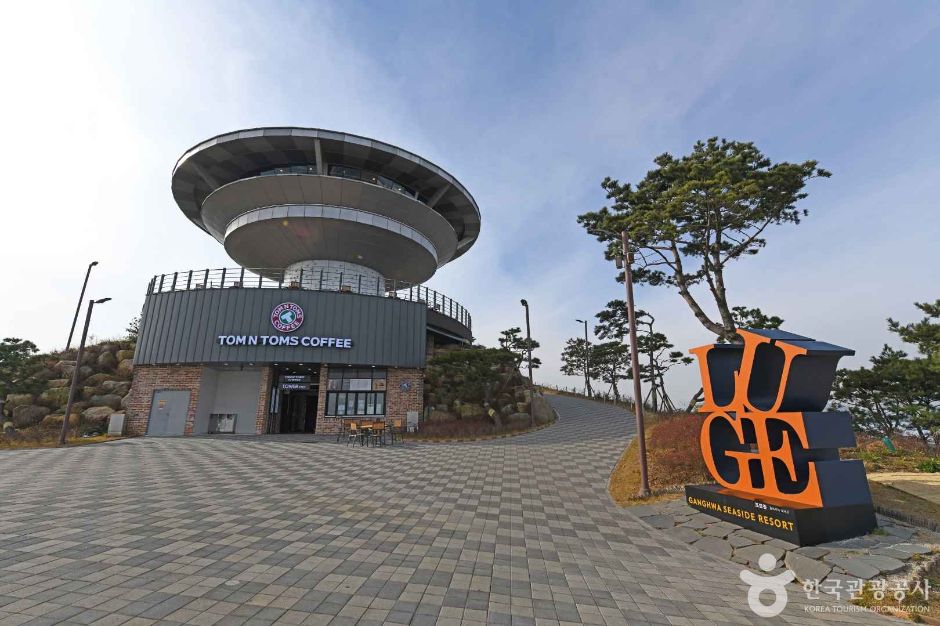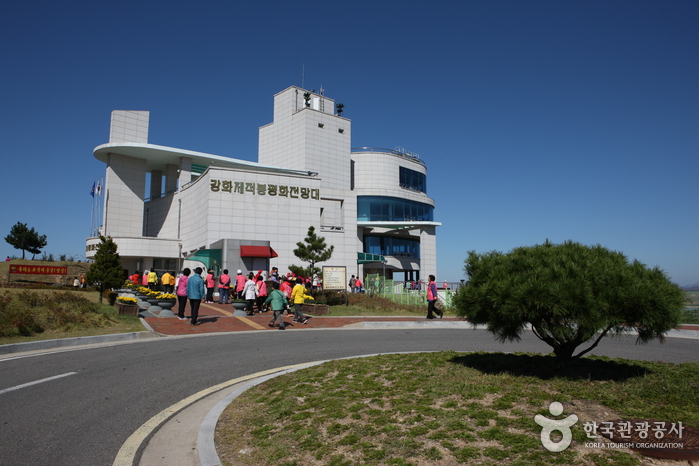Gimpo Art Village (김포 아트빌리지)
14.8Km 2023-02-06
170, Modamgongwon-ro, Gimpo-si, Gyeonggi-do
Gimpo Art Village features various culture and arts experience sites, an art center exhibition hall where high-quality exhibits can be enjoyed, an outdoor performing stage that can accommodate up to 1,000 people at once, and a traditional play experience ground. The Village also has a traditional hanok stay experience hall, multipurpose hall and practice rooms where art clubs and organizations can engage in creative activities to their heart's content, a VR (virtual reality) experience hall for people of all ages and genders, and many other spaces for culture and arts for citizens to enjoy in the midst of their lives.
Historical background: The Unyang-dong part of Modamsan Mountain where Gimpo Art Village is located is speculated to be the origin of the ancient country of Baekje. Seated before broad plains and Najincheon Stream, the art village also sits in front of Modamsan, the home of numerous Mahan tombs from which a 120-centimeter-long steel sword, crystal jade, and golden earrings, the oldest of its kind unearthed thus far, were once discovered. There have also been many discoveries of settlements from the New Stone Age and Bronze Age as well as dolmens from the Bronze Age so it is believed that a group with a powerful authority had been living in the Modamsan area since ancient times. In the Joseon period, the area became a part of Cheonhyeon-ri and Cheongsudong-ri, Seokhan-myeon. Modamsan is the home of the shrine and grave of Sim Ong, a military vassal from the early Joseon Dynasty who was a second-level meritorious vassal and had the positions of General Jeolchung and later Yeonguijeong, which was given after his death. Also located on the northern riverside of Hangang is Gambawi Rock where Jungbong Jo Heon, a civil vassal from the mid-Joseon period and leader of a righteous army, used to fish to soothe his patriotic sentiments.
Ganghwa Luge (Ganghwa Seaside Resort) (강화루지(강화씨사이드리조트))
15.0Km 2025-06-25
217 Jangheung-ro, Ganghwa-gun, Incheon
+82-32-930-9000
Ganghwa Seaside Resort delivers joy, happiness, and love with a gondola, food court, themed trails and the only luge track in the western part of the metropolitan area. It is a place where visitors can meet the mountains and the sea and feel the profoundness of nature without having to travel far way from the city. Visitors can take the gondola to reach the top, guided by the rich scent of the forest, and fully enjoy the atmosphere of Ganghwado Beach as well as the beautiful sunset from the observatory. The resort has a luge designed to descend dynamically through a 1.8-kilometer track, offering an excitement perfect for all members of the family.
Haeden Museum (해든뮤지움)
15.1Km 2025-10-23
44 Jangheung-ro 101beon-gil, Gilsang-myeon, Ganghwa-gun, Incheon
Nestled amid the beautiful landscapes of Incheon, the Haeden Museum is a private art museum that opened in 2013. It showcases works by renowned Korean artists as well as international contemporary masters, including Chagall, Frank Stella, Roy Lichtenstein, Nam June Paik, Kim Whanki, and Lee Ufan. The museum not only hosts exhibitions but also offers educational programs. Its stunning architecture, which earned the Best 7 Architecture of the Year in Korea award in 2013, centers around the concept of harmony and communication with nature, making it a perfect getaway to connect with both art and nature.
E-Mart - Paju Unjeong Branch [Tax Refund Shop] (이마트 파주운정)
15.5Km 2024-04-17
123, Hanul-ro, Paju-si, Gyeonggi-do
-
Olive Young - Paju Unjeong Branch [Tax Refund Shop] (올리브영 파주운정점)
15.5Km 2024-06-27
#101~#105, 377, Mirae-ro, Paju-si, Gyeonggi-do
-
Himart - Paju Unjeong Branch [Tax Refund Shop] (하이마트 파주운정점)
15.6Km 2024-04-19
311, Mirae-ro, Paju-si, Gyeonggi-do
-
Olive Young - Paju Garam Branch [Tax Refund Shop] (올리브영 파주가람점)
15.7Km 2024-06-27
2, Garam-ro, Paju-si, Gyeonggi-do
-
E-Mart - Paju Branch [Tax Refund Shop] (이마트 파주)
15.7Km 2024-04-22
10, Dangha-gil, Paju-si, Gyeonggi-do
-
CheongKwanJang - Unjeong Branch [Tax Refund Shop] (정관장 운정점)
15.8Km 2024-06-27
610, Mirae-ro, Paju-si, Gyeonggi-do
-
Ganghwado Jejeokbong Peace Observatory (강화도제적봉 평화전망대 )
16.0Km 2021-10-23
797, Jeonmangdae-ro, Ganghwa-gun, Incheon
+82-32-930-7062
Ganghwado Jejeokbong Peace Observatory was constructed in the northern area of the Civilian Restricted Zone in Cheolsan-ri, Yangsa-myeon. Entry to this area was strictly prohibited to the general public until 2008. The observatory allows visitors to take a closer look at the natural beauty the lies beyond the northern border. The observatory consists of four floors. The basement and fourth floor are used by the military; the first floor sells regional produce from Ganghwado Island and specialty products from North Korea, and the second and third floors make up the audio-visual rooms with materials related to North Korea and an observatory where one can observe the Northern territory from afar.


![E-Mart - Paju Unjeong Branch [Tax Refund Shop] (이마트 파주운정)](http://tong.visitkorea.or.kr/cms/resource/52/2881252_image2_1.jpg)
![Himart - Paju Unjeong Branch [Tax Refund Shop] (하이마트 파주운정점)](http://tong.visitkorea.or.kr/cms/resource/74/2889974_image2_1.jpg)
![E-Mart - Paju Branch [Tax Refund Shop] (이마트 파주)](http://tong.visitkorea.or.kr/cms/resource/46/2888946_image2_1.jpg)
![CheongKwanJang - Unjeong Branch [Tax Refund Shop] (정관장 운정점)](http://tong.visitkorea.or.kr/cms/resource/94/3314194_image2_1.jpg)

 English
English
 한국어
한국어 日本語
日本語 中文(简体)
中文(简体) Deutsch
Deutsch Français
Français Español
Español Русский
Русский